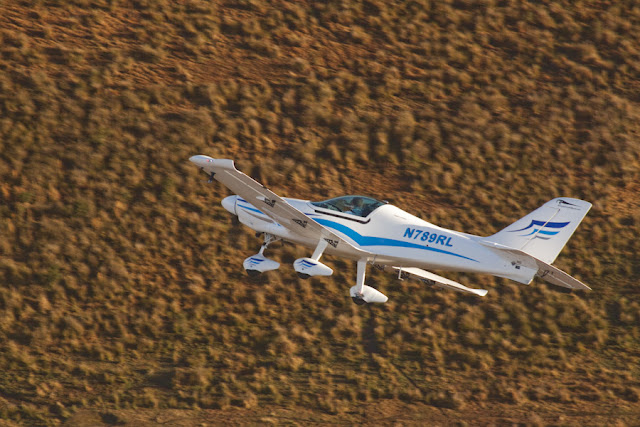In that vein, since the day the Light Sport category became a fixture of the aviation regulatory landscape, there have been calls to do everything from abolish it outright to expand it's current parameter.
 |
| With Americans "on the grow", how much room should LSA have? |
In that vein, I want to share with you some cogent email comments received from P&P reader Dr. Barry Gloger who puts forward a well-reasoned argument for reworking the LSA concept.
Whether you agree or not with his point of view, it's hard to refute his logic, since it's based on his expertise in the actual physical size of the "average American."
And now for The Usual Disclaimer: his viewpoint does not necessarily reflect my opinion or that of the staff of Plane & Pilot. If you have a take on this subject, pro or con, please weigh in and share it with us: that's what this blog is here for.
Rather than paraphrase his comments, I'll let Dr. Gloger take it from here:
"At 6' 4" and 250 lbs, this is a subject near and dear to me. As an Orthopaedic Surgeon, who designs joint prostheses, I am quite aware of the ever enlarging American body. There are numerous LSA's that I literally cannot shoe horn my body into....
"In addition to cabin width, I wish manufacturers would list headroom above the seat, so customers knowing their torso length or sitting height (measured from the Ischium [sit bones] to the top of the head) could figure out if they'll be able to close the canopy.
"I cannot close the canopy of (many) aircraft and one plane, which advertises enough headroom for someone 6' 8", has a well behind the spar. Sure my head fit back there, but I could not even see the panel, never mind the fractured skull I would suffer in any hard landing."
"Did you see the new Bristell at Sebring - it looks like a more commodious version of the Sport Cruiser - hope it is not as sensitive..."
(My comment: I did fly the Bristell at Sebring - see my report in the next issue of P&P. It advertises sufficient headroom for a 6'6" pilot, which seems to be a truthful claim based on my time in cockpit.)
"My major gripe is with the LSA rule is the rather arbitrary choice of 1320 pounds as the maximum gross weight limit, a number seemingly chosen by the FDA, just because its metric equivalent, 600 kg, is a nice round number.
 |
| Barry Pruitt is a good sized guy and he's showing plenty headroom in the new Bristell Fastback, one of the more "commodious" LSA. |
"...In order to meet the 1320 pounds gross weight limit, manufacturers resort either to expensive components, such as carbon fiber, or build flimsy under carriages...
"The average American is no longer the 5'7", 155 lb individual, when the FAA and Coast Guard originally set occupancy/capacity/ergonomic standards: the 75th percentile man now weighs 200lbs and no longer fits an 18” stadium seat. Imagine how much larger the LSA market could be, if planes could be designed to meet all the other LSA requirements (such as stall speed, maximum speed, fixed prop, etc.) and yet safely carry a full fuel payload of 500 to 600 pounds. Perhaps you and your friend, Dan Johnson, could petition the FAA to modify the LSA rule.
(AOPA, EAA and other orgs and individuals are pushing this effort on several fronts, along with the LSA-style driver's license/self certify flight worthiness in lieu of a current FAA medical for lighter GA single-engine aircraft.)
"Terrafugia is struggling to bring its drivable aircraft in at 1320 pounds. Think how much cheaper it would be, if it also did not have to meet this unnecessary weight restriction.
 |
| Could four-seat, ASTM-certified aircraft like this Piper Archer LX be in our future? |
"And that brings up the problem with LSA’s; they don’t have large enough payloads...I understand why the FAA and LAMA came up (with) the requirements that an LSA shall be a 2 passenger plane that stalls at 45 kts max, flies at 120 kts max, has a single engine with fixed prop and landing gear.
"But they should have stopped there...left the gross weight unspecified, so manufacturers would have the flexibility to design planes with full fuel payloads of 500 to 600 lbs. Yes a plane heavier than 1320 lbs has more kinetic energy and momentum, but that has no effect on safety unless you crash into someone’s house.
""So I propose that the FAA revise the LSA rule to eliminate max gross weight restrictions, replacing it instead with standards governing landing g forces, wing loading or whatever design parameters are needed to produce a docile plane that doesn’t break up in routine flight or hard landing, maintaining the important restrictions of a 2 passenger plane that stalls at 45 kts max, flies at 120 kts max, has a single engine with fixed prop and landing gear."
Thank you Dr. Gloger. There are many, many ways to go at this argument both for and against such a proposal: we could fill a magazine several times a year just with this topic alone.
Dear readers, please weigh in with your thoughts.



3 comments:
6'4" and 250 lbs is very, very lean. I am 6'5" and 325 lbs, and nowhere near "fat".
I am somewhat concerned how my knees hit against the panel edge in everything except CTLS with "mushroom" panel. Any small mishap and I'm going to break my kneecaps. That may be fatal if I am unable to exit the aircraft thereafter.
ザイツェヴ , you are one Giant Economy Sized dude, even in an expanding American universe!
Thanks for sharing...LSA, while many are roomier than many GA airplanes (ever tried to squeeze into a Mooney?) are certainly a much better fit for pilots in the 6'2" or under crowd.
I am 6'8" tall and 220 lbs and have a slender build and have always wanted and have had the desire to fly GA aircraft. I have always been hooked on aviation since I was a small boy and have so dreamed of the day that I would be able to earn my pilots license and begin my dream of flying. I know that being 6'8" has its limitations and there are not a whole lot of aircraft out there that would fit my build let alone being able to fit in an lsa aircraft. My question is simply this: What types of aircraft, rather it be GA or LSA, would a man of my size be able to fit in and fly comfortably to do flight training in to receive my private pilots license?
Post a Comment